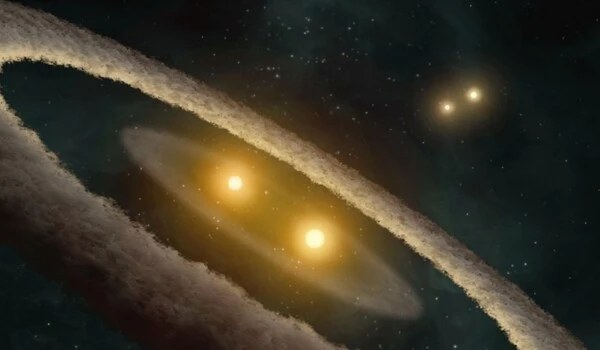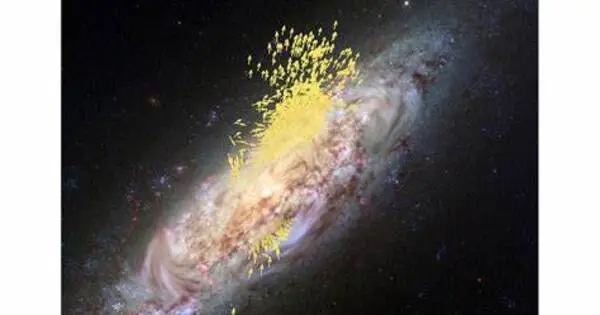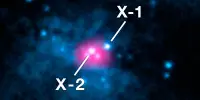A new image of a distant galaxy may help scientists understand how it formed and the origins of our own Milky Way. BRI 1335-0417 is the oldest and farthest known spiral galaxy in our universe, dating back more than 12 billion years. Dr. Takafumi Tsukui, the study’s lead author, explained that a cutting-edge telescope called ALMA enabled them to examine this ancient galaxy in greater depth.
“Specifically, we were interested in how gas was moving into and throughout the galaxy,” said Dr. Tsukui. “Gas is a key ingredient for forming stars and can give us important clues about how a galaxy is actually fuelling its star formation.”
In this case, the researchers were able to not only capture the motion of the gas around BRI 1335-0417, but also reveal a seismic wave forming — a first in this type of early galaxy. The galaxy’s disk, a flattened mass of rotating stars, gas and dust, moves in a way not dissimilar to ripples spreading on a pond after a stone is thrown in.
Early galaxies formed stars at a much faster rate than modern galaxies. This is true for BRI 1335-0417, which, despite having a similar mass to our Milky Way, forms stars hundreds of times faster. We wanted to know how much gas is needed to keep up with this rapid rate of star formation.
Associate Professor Emily Wisnioski
“The vertically oscillating motion of the disk is due to an external source, either from new gas streaming into the galaxy or by coming into contact with other smaller galaxies,” says Dr. Tsukui. “Both scenarios would flood the galaxy with new star formation fuel.” In addition, our research revealed a bar-like structure in the disk. Galactic bars can disrupt gas and transport it to the center of the galaxy. The bar discovered in BRI 1335-0417 is the farthest known structure of this type. These findings show the dynamic growth of a young galaxy.”
Because BRI 1335-0417 is so far away, its light takes longer to reach Earth. The images seen through a telescope in the present day are a throwback to the galaxy’s early days — when the Universe was just 10 per cent of its current age.

Seismic ripples, or “galactic seismic waves,” may refer to the study of oscillations or disturbances within a galaxy, often detected through observations of stars or other celestial objects. These oscillations can provide valuable information about the structure and dynamics of galaxies.
“Early galaxies formed stars at a much faster rate than modern galaxies.” This is true for BRI 1335-0417, which, despite having a similar mass to our Milky Way, forms stars hundreds of times faster, according to co-author Associate Professor Emily Wisnioski.
“We wanted to know how much gas is needed to keep up with this rapid rate of star formation.” Spiral structures are uncommon in the early Universe, and how they form is also unknown. This research also provides critical information on the most likely scenarios. While it is impossible to directly observe the evolution of the galaxy because our observations only provide a snapshot, computer simulations can help piece the puzzle together.”
















